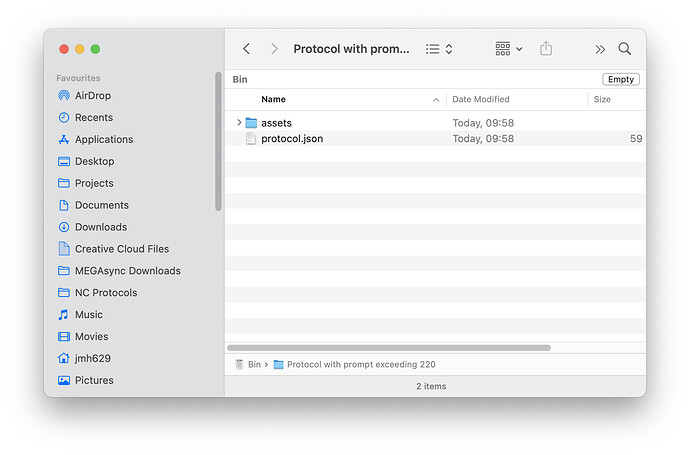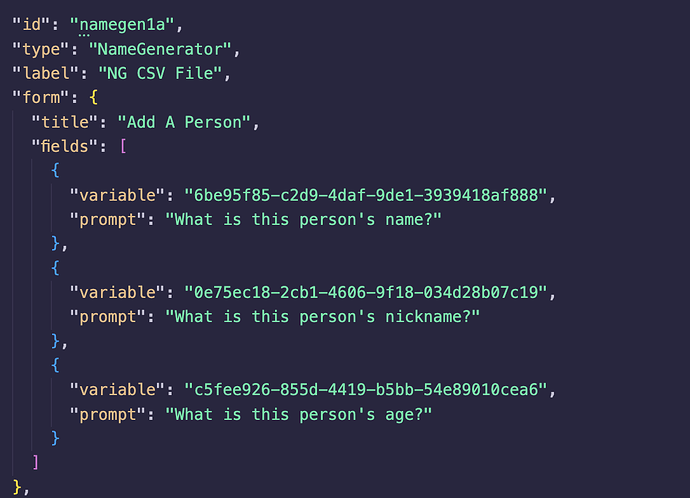We are running into an issue where the 200-character limit is requiring us to cut short some standard social network questions. I am wondering why this limit exists. Is there any way to increase it? Thanks!
Hey @AaronGuest!
Sorry for the difficulties with this. It must be really frustrating not to be able to fit your prompts in. I’ll try and help you out here.
The reasons for the limit basically boil down to a combination of the following:
- We have very limited amounts of vertical space to work with. We decided to use “three lines” as the maximum supported amount of text for a prompt so that we could make sure we had enough space for everything else.
- We chose 220 characters because in the largest study to use the prototype of the software, this comfortably allowed for all of our prompts. We’ve not had any other reports of issues (not that there haven’t been some from people who just got annoyed and didn’t tell us!). Your issue might be a sign that this was flawed logic on my part.
- Generally speaking, shorter prompts are more aligned with our core philosophy of using interviewers to facilitate an interview. The interviewer is typically expected to have an accompanying script which includes many of the additional clauses that sometimes get put into written prompts when a survey is self-administered. Stripping these, out usually leaves you with pretty lean prompts, which are easier for the participant to focus on.
I do have a potential workaround for you that might let you squeeze in a few extra characters. Before I share it, do you mind sharing an example of the sorts of standard questions you aren’t able to fit within the 220 character limit? If we have time in the future or we need to do a bug fix release, we can look at changing this.
Workaround
Basically, the workaround is to manually edit the protocol file in a text editor. The 220 character limit is only enforced within Architect, so if you edit the protocol file manually you can enter however much text you like.
A quick description of how to do this is:
- Rename your protocol from
.netcanvasto.zipand extract the contents somewhere on your computer.
- You will see a
protocol.jsonfile. Open this file in a text editor. Use the search feature to find the prompt you want to edit. You will see the prompt text is stored as a double quoted string under the property “prompt”.
- Edit the text, taking care not to alter anything else in the protocol. Save the file.
- Add all files in the folder into a zip file using whatever process you have available. On my mac, I can select all the files, right click them, and choose compress.
- Rename the
.zipfile back to.netcanvas(including setting the file name to whatever you want the protocol name to be).
Please note: Increasing the text beyond the limit in Architect will mean that the prompt you are changing can no longer be edited in Architect. All other changes should still be possible, however.
This approach might also result in your text being truncated if it exceeds the three line limit (see screenshot below). If this happens, experiment with reducing the text size using the settings under “visual preferences”.
Hope this helps!
Hi @Joshua
Apologies for not replying to this sooner! I am unsure how I missed that you provided such a detailed response to the issue. Your response makes sense - I have primarily used Network Canvas as a stand-alone tool for interviewing, not as part of a broader interview discussion - although I have tried to implement the interview notes feature more and more. I may try to use the workaround to see if it can address the challenge. For now, we have cut down the length of the question.
The question we were using was a variation of the standard important matters questionnaire question:
From time to time, most people discuss important matters with other people. Looking back over the last six months - who are the people with whom you discussed matters important to you? Just tell me their first names or initials.
But I think we were able to create a workaround for now. Thanks for your feedback!


